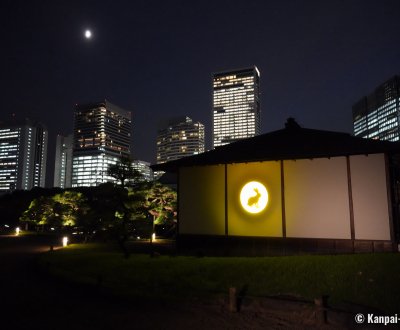Tsukimi
🎑 Contemplation of the Beautiful Autumn Moon
Tsukimi is a Japanese tradition dedicated to the viewing of the full moon in autumn, an event taking place every year on a date varying between mid-September and early October. Two nights are particularly important and determined by the former Koyomi luni-solar calendar: Jugoya, considered the most beautiful moon of the year and Jusanya about one month later. Jusanya is also a typically Japanese custom and attending both nights is said to bring good fortune.
O Tsukimi (お月見 "moon-viewing") is an old habit consisting in watching the full moon on the 15th day of the 8th month of the former Zuni-solar calendar. This custom is also named Kangetsu (観月 "moon-viewing"). The date varies each year between mid-September and early October and is set following the seasonal calendar Koyomi.
The moon is an important celestial body throughout Asia, and especially in China where the Mid-Autumn 🍁 Festival remains a celebration almost as important as the New Year even today.
In Japan, the autumnal moon-viewing is characteristically spread over 2 nights.
🌾 The origins of Tsukimi
The moon-viewing festival is the celebration of the end of the autumn harvests, that was imported from China, and introduced to the Japanese Imperial Court in the 9th-10th centuries. Heian’s aristocrats would hold feasts called Kangetsu-kai for the occasion. These parties typically took place in their large garden and the highlight was viewing the reflection of the moon in the pond that was also used for navigation in a small boat. Guests would write waka poems while enjoying a cup of sake 🍶.
The custom extended to the population during the Edo period. As the date of the 15th day of the 8th month coincided with harvest time, it was also an occasion to celebrate abundance.
The ways of celebrating the moon and its symbols are still evolving and nowadays people have stopped watching the reflection of the moon to look directly at the earth’s satellite.
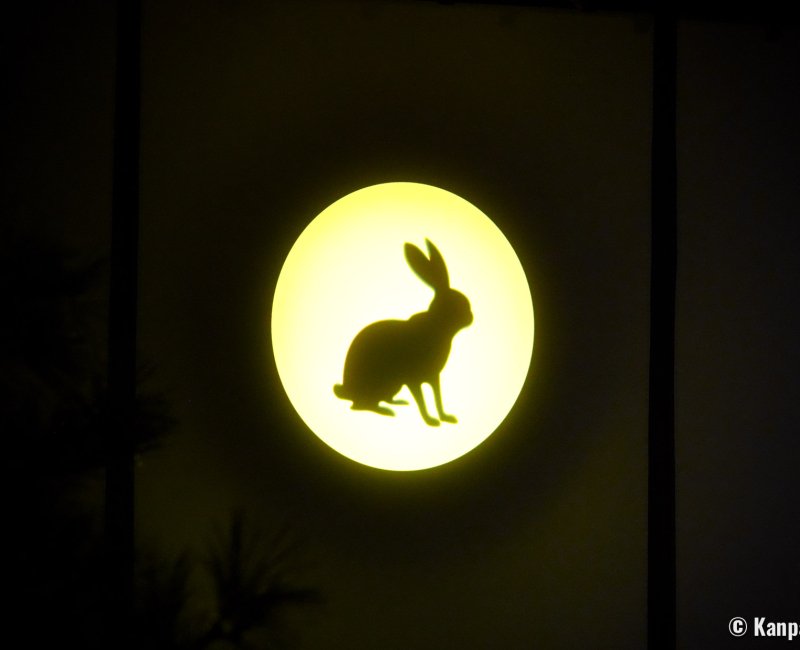
🌕 The dates of Tsukimi
In Japan, O Tsukimi is celebrated every year during 2 specific nights: Jugoya, then Jusanya, about 1 month later.
The first celebration, Jûgoya (十五夜 meaning the "15th night"), is also called "the beautiful mid-autumn moon" (中秋の名月 chūshū no meigetsu) as the moon appearing this evening is considered the most beautiful moon of the year. However, the moon-viewing usually takes place over a couple of nights: on the 15th day of the 8th month the moon is supposed to be full, but it is not always the case, so the observation can start with a waxing or nearly full moon. This time of the year is also marked by the harvest of taro (satoimo in Japanese), a root akin to the sweet potato 🍠, so Jugoya is also called Imo meigetsu (芋名月).
The second moon-viewing night takes place about 1 month later and is named Jusan’ya (十 三 夜 "13th night") that is to say the 13th night of the 9th month in the former luni-solar calendar, that falls at the end of the autumnal harvests. It is also called Kuri meigetsu (栗名月) or Mame meigetsu (豆名月) referring respectively to the harvests of the chestnuts and edamame soy beans. It is also called Nochi no tsuki (後の月), the "second moon". This tradition is typically Japanese and doesn’t exist in the other regions practicing O Tsukimi.
A recent tradition that emerged from the former red light districts recommends to take the 2 occasions to watch the moon so as to ensure good fortune. The next dates to celebrate Tsukimi are the following:
- In 2025: Jugoya on Monday October 06; Jusanya, on Sunday November 2;
- In 2026: Jugoya on Friday, September 25; Jusanya, on Friday, October 23;
- In 2027: Jugoya, on Wednesday, September 15; Jusanya, on Tuesday, October 12;
- In 2028: Jugoya, on Tuesday, October 3; Jusanya, on Monday October 30;
- In 2029: Jugoya, on Saturday, September 22; Jusanya, on Saturday October 20.
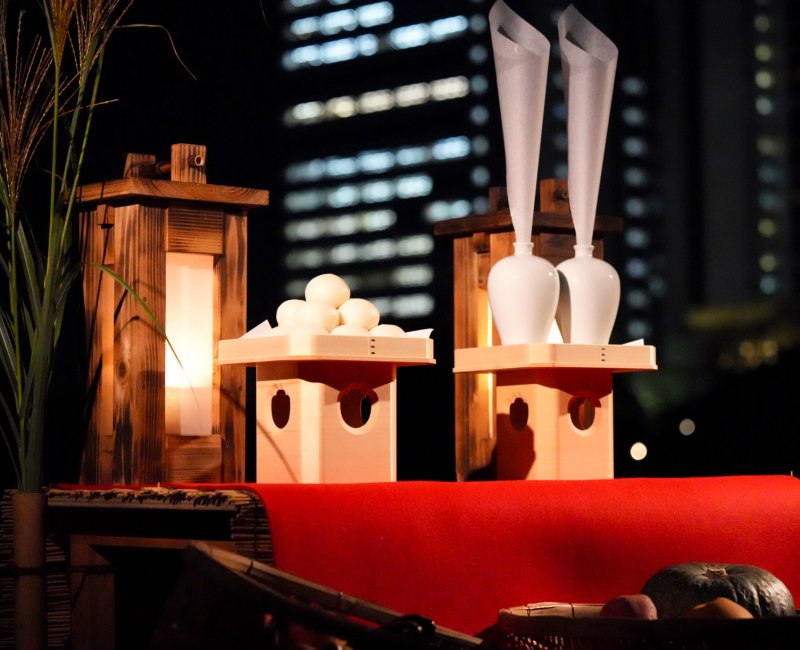
🍡 How to celebrate Tsukimi
Tsukimi is a time for gathering, most of the time in a small group, to spend the night watching the moon and enjoying a cup of sake. The place for moon-viewing is decorated with susuki pampa grass, whose stems are arranged in odd number sets (3 or 7 stems) in a vase, or in a floral composition with the 6 other autumn flowers (Japanese clover, kudzu, carnation (nadeshiko), thoroughwort, bell-flower, golden lace). The feather-like shape of the susuki reminds the ear of rice that it gradually replaced in the decoration. Moreover, the plant is said to connect with the divine realm and to ward off evil and disasters.
The tsukimi dango 🍡 are another symbolic decoration for tsukimi: the round shape of these small rice mochi are a reminder of the shape of the moon. The pastries are arranged into a pyramid, by 12 or 13 depending on the number of months of the on-going lunar year.
A fun custom also tool place in olden times: the O Tsukimi dorobô (O Tsukimi’s thieves). On this occasion, tsukimi dango were placed in plain view at the entrances of houses or on their inner engawa veranda as a game for children to come and sneak the sweets. The higher the number of "lost" dango, the better the house would be lucky.
Additionally, there is a tradition of eating taro root hot pot, as well as other seasonal fruits and vegetables such as chestnuts, edamame beans and pumpkin.
Lately, during the early autumn days restaurants serve limited edition dishes for tsukimi that are called tsukimi ryori (月見料理 "moon-viewing cuisine"), that often include eggs. Eggs are indeed symbolically associated to the moon: the yolk being the full moon and the white assimilated to clouds floating by the moon. Tsukimi ryori offers choices like:
- Tsukimi udon, which is a bowl of udon noodles topped with a raw egg. Other versions of the dish exist with the other types of noodles;
- Tsukimi burger, mostly in fast-food restaurants, is a sandwich whose usual filling is garnished with an additional fried egg.
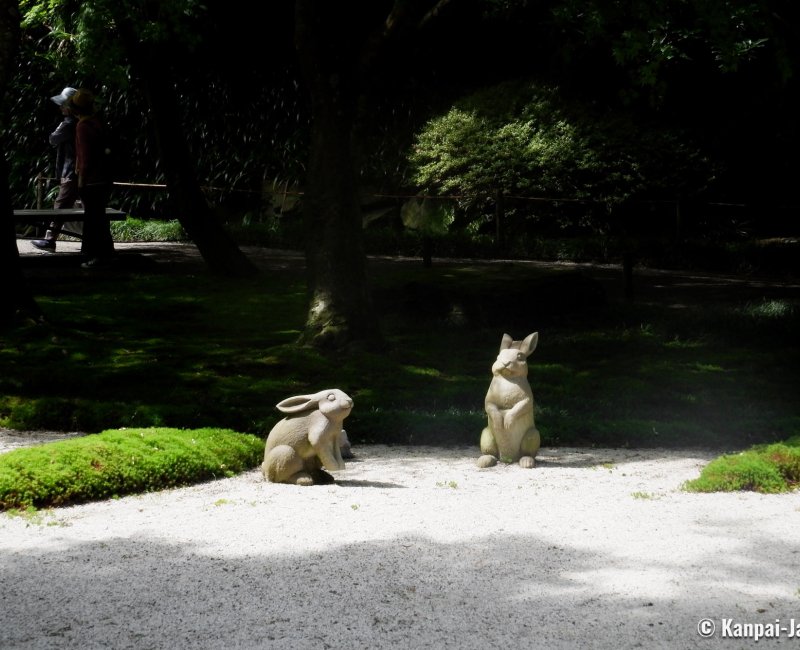
🐇 Japanese folklore of the autumn moon
The celebrations of the beautiful autumnal moon are closely related to the rabbit. In Asia, the dark markings on the moon are viewed as the silhouette of a rabbit pounding rice in a mortar to make mochi. It is a reference to an old Indian legend telling how a rabbit sacrificed itself to feed a starving old man. The old man was in fact a god, who moved by the rabbit’s generosity, offered it the moon. The tradition of the mochi making rabbit is said to come from the name of this action in Japanese: mochitsuki (餅つき) that sounds a lot like another name for the Jugoya full moon: mochizuki (望月).
Another famous legend about the moon is the Tale of the Bamboo Cutter (Taketori monogatari). An elderly couple finds a baby girl in bamboo stem. The mysterious girl is claiming she came from the "capital of the moon", and after many adventures and twists, she is finally brought back to the moon. The story was animated in 2013 in the movie The Tale of the Princess Kaguya (Kaguya-hime no monogatari) by Isao Takahata.
Japan also named its first lunar mission (2007 – 2009) Kaguya, in reference to this tale that is well-known by Japanese children.
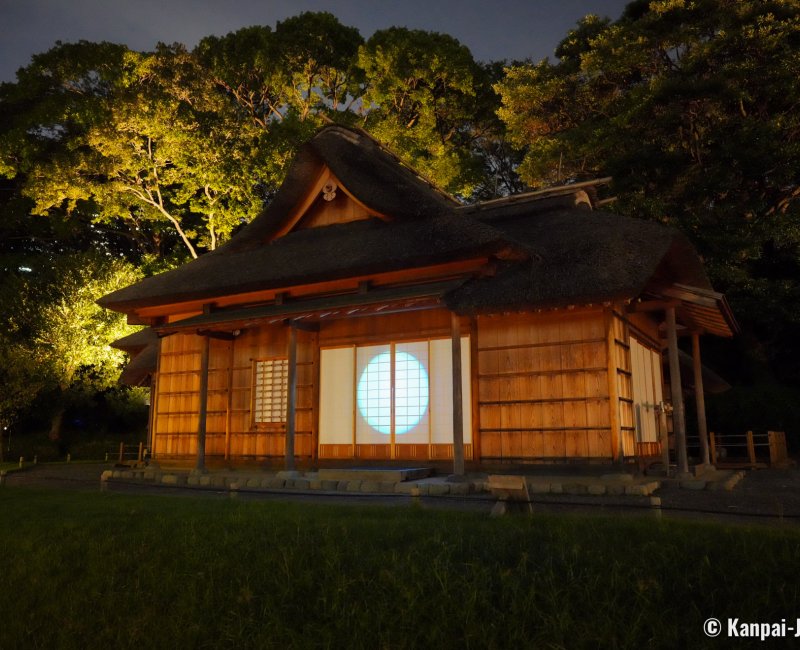
🌃 Where to do O Tsukimi moon-viewing
In the past, the nobility and the emperor’s entourage watched the autumn moon in the sophisticated garden of their residences: for example from a boat on Ozawa pond in Daikaku-ji, or from the Tsukimidai platform at Katsura Rikyu Imperial Villa.
Nowadays, the light of the full moon can be enjoyed in Kyoto’s Arashiyama, or at Shinobazu Pond in Ueno Park in Tokyo. Katsurahama Beach 🏖 in the south of Shikoku island is renowned for its view on the moon.
For a unique moon-viewing experience, the Japanese garden Hama-Rikyu located on the shore of Tokyo Bay, offers evening walks for a few nights around the 2nd moon-viewing event Jusan’ya, in a seasonal event called Hamarikyu Tsukimi Sanpo.
Several other gardens or temples extend their opening hours to set up a few Tsukimi no Kai evenings for the 1rst moon: Mukojima Hyakkaen in Tokyo or Ishiyama-dera temple in Otsu for example.
Lastly, the Chinese districts Chukagai of Yokohama and Nagasaki and Nankinmachi in Kobe have special menus and events during the Tsukimi period between mid-September and early October.

